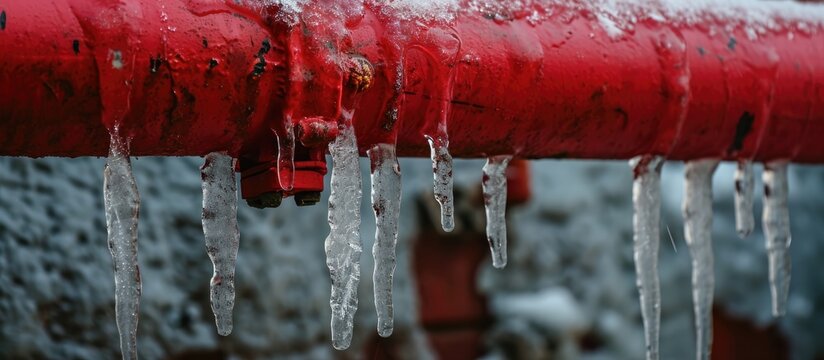Ways to Maintain Your Pipes from Cold Weather Damage: Crucial Advice
Ways to Maintain Your Pipes from Cold Weather Damage: Crucial Advice
Blog Article
They are making several good observations related to How to prepare your home plumbing for winter weather as a whole in the article just below.

Cold weather can ruin your plumbing, specifically by freezing pipes. Here's how to stop it from happening and what to do if it does.
Introduction
As temperature levels drop, the risk of frozen pipelines rises, potentially leading to expensive repairs and water damage. Recognizing how to avoid frozen pipes is crucial for house owners in cold climates.
Recognizing Icy Pipelines
What triggers pipes to freeze?
Pipes freeze when exposed to temperature levels listed below 32 ° F (0 ° C) for extended durations. As water inside the pipelines ices up, it expands, taxing the pipeline wall surfaces and potentially creating them to rupture.
Dangers and damages
Frozen pipes can result in supply of water interruptions, residential property damages, and pricey repairs. Burst pipes can flood homes and create substantial architectural damage.
Indications of Frozen Pipeline
Identifying icy pipelines early can avoid them from rupturing.
Exactly how to identify frozen pipelines
Search for reduced water flow from taps, unusual smells or noises from pipelines, and visible frost on subjected pipelines.
Prevention Tips
Protecting at risk pipelines
Wrap pipelines in insulation sleeves or utilize heat tape to safeguard them from freezing temperatures. Concentrate on pipes in unheated or external areas of the home.
Home heating techniques
Keep interior rooms adequately warmed, especially locations with pipes. Open up closet doors to enable cozy air to circulate around pipes under sinks.
Shielding Exterior Pipes
Garden hose pipes and outside taps
Separate and drain yard pipes prior to winter season. Install frost-proof spigots or cover outside faucets with shielded caps.
What to Do If Your Pipes Freeze
Immediate activities to take
If you presume icy pipelines, maintain taps open up to relieve stress as the ice thaws. Make use of a hairdryer or towels taken in warm water to thaw pipes gradually.
Long-Term Solutions
Structural adjustments
Consider rerouting pipelines away from outside wall surfaces or unheated areas. Add additional insulation to attic rooms, basements, and crawl spaces.
Updating insulation
Purchase top notch insulation for pipelines, attic rooms, and wall surfaces. Correct insulation aids keep regular temperatures and decreases the risk of icy pipes.
Conclusion
Protecting against frozen pipes requires proactive procedures and quick actions. By understanding the reasons, signs, and preventive measures, property owners can protect their plumbing during cold weather.
5 Ways to Prevent Frozen Pipes
Drain Outdoor Faucets and Disconnect Hoses
First, close the shut-off valve that controls the flow of water in the pipe to your outdoor faucet. Then, head outside to disconnect and drain your hose and open the outdoor faucet to allow the water to completely drain out of the line. Turn off the faucet when done. Finally, head back to the shut-off valve and drain the remaining water inside the pipe into a bucket or container. Additionally, if you have a home irrigation system, you should consider hiring an expert to clear the system of water each year.
Insulate Pipes
One of the best and most cost-effective methods for preventing frozen water pipes is to wrap your pipes with insulation. This is especially important for areas in your home that aren’t exposed to heat, such as an attic. We suggest using foam sleeves, which can typically be found at your local hardware store.
Keep Heat Running at 65
Your pipes are located inside your walls, and the temperature there is much colder than the rest of the house. To prevent your pipes from freezing, The Insurance Information Institute suggests that you keep your home heated to at least 65 degrees, even when traveling. You may want to invest in smart devices that can keep an eye on the temperature in your home while you’re away.
Leave Water Dripping
Moving water — even a small trickle — can prevent ice from forming inside your pipes. When freezing temps are imminent, start a drip of water from all faucets that serve exposed pipes. Leaving a few faucets running will also help relieve pressure inside the pipes and help prevent a rupture if the water inside freezes.
Open Cupboard Doors
Warm your kitchen and bathroom pipes by opening cupboards and vanities. You should also leave your interior doors ajar to help warm air circulate evenly throughout your home.

Do you enjoy more info about Preventing and dealing with frozen pipes? Place a comment below. We will be glad to hear your opinions about this article. We hope that you visit us again in the near future. Don't hesitate to pause to promote this page if you liked it. Thank you so much for taking the time to read it.
Estimate Report this page